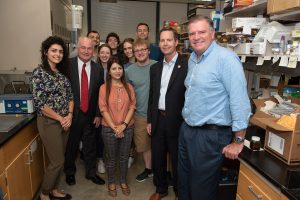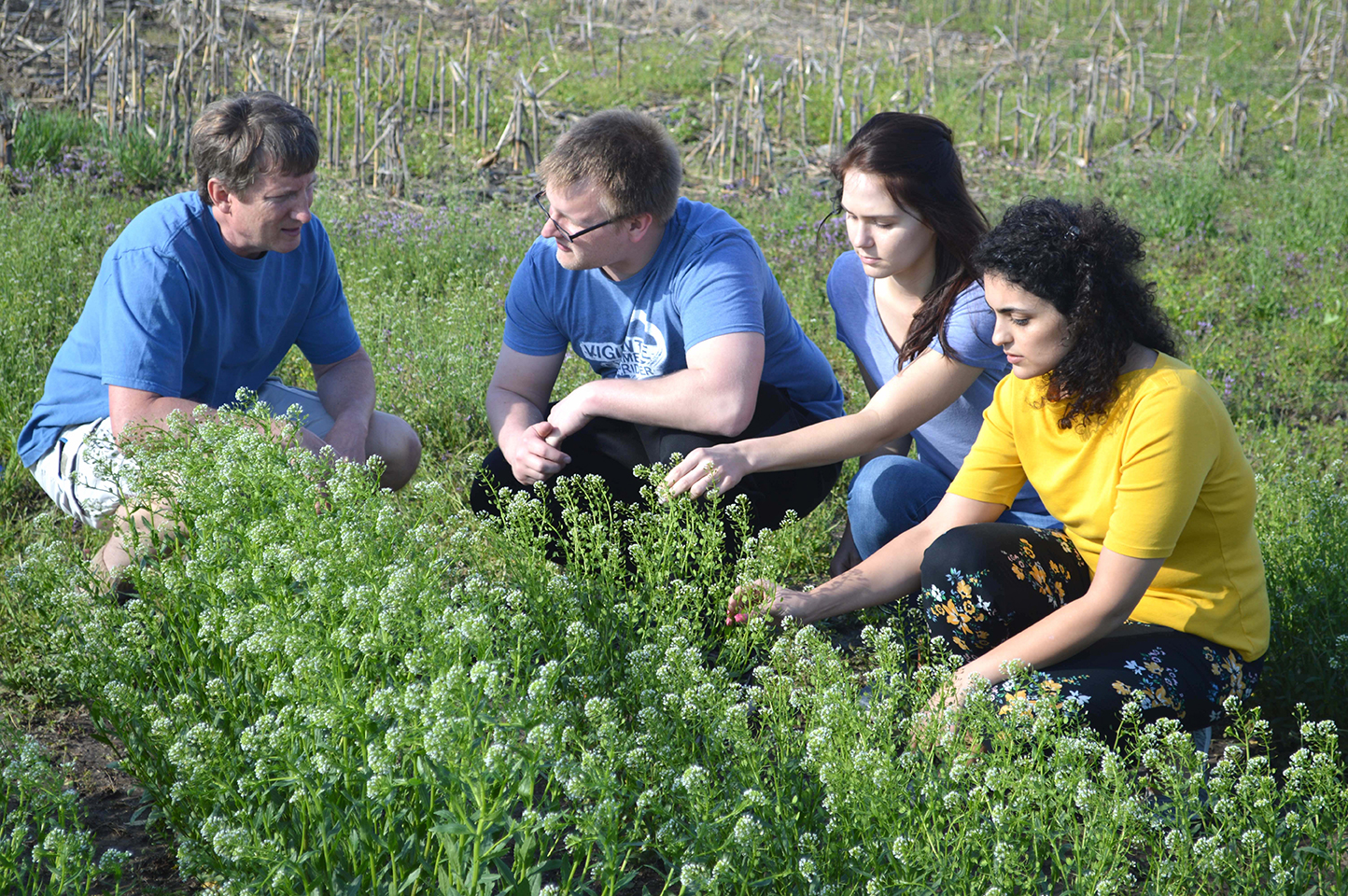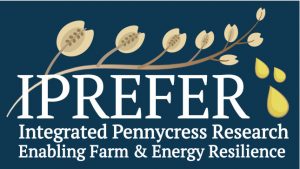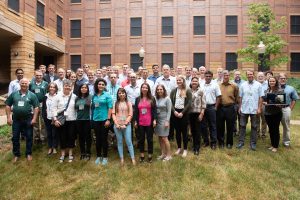Nearly 80 million acres of land in the Midwest are devoted to corn and soybeans in the growing season, which means millions of acres of land sit empty in the winter months. A $10 million grant from the United States Department of Agriculture (USDA) aims to protect that idle land and provide extra income to farmers. The grant will allow researchers to domesticate a plant into a winter cover crop that can be used to produce biodiesel, jet fuel, and animal feed.
“From the time you harvest corn and soybeans till you plant in May there’s mostly nothing in the ground,” said Illinois State University’s Professor of Genetics John Sedbrook, who has been working for years to convert what many consider a weed—pennycress—into a viable “cover crop,” or a crop that can be planted by farmers during the winter months. “Thlaspi arvense, or pennycress is an annual oilseed cover crop that has the potential to produce 3 billion gallons of fuel per year.”
With the grant, Illinois State researchers will work closely with the lead institution, Western Illinois University, as well as researchers at the University of Minnesota, the Ohio State University, the University of Wisconsin-Platteville, the USDA, and the St. Louis-based crop development company CoverCress, Inc. Working as a group known as the Integrated Pennycress Research Enabling Farm and Energy Resilience (IPREFER), Sedbrook said the goal is to have an infrastructure in place within five years, so farmers can plant and harvest pennycress as a cover crop, and processing companies can convert the seed to fuel and feed.
“The integration of pennycress as a cash cover crop will positively impact producers’ profits, decrease soil erosion and nutrient runoff which protects water systems, support pollinating species (bees and other pollinators), suppress weeds, diversify the nation’s energy sources, and contribute to rural economies,” said Western Illinois University’s Agriculture Professor Win Phippen, the main recipient of the grant. “We’re very excited to further refine this powerhouse crop as an alternative for our Midwest farmers.”
At Illinois State, the grant will help support the ongoing work of Sedbrook’s lab. Over the years, the USDA has awarded Sedbrook’s work with more than $3 million in grants to bring out positive genetic traits in pennycress, ensuring seeds can be used for biofuel, and the seed remnants can be added to meal to feed animals. “We’ve made two key genetic changes to those seeds to make them edible and more nutritious,” said Sedbrook, whose lab at Illinois State is devoted to integrated plant biology and bioenergy. He noted the same process was used in the 1960s to convert rapeseed into canola oil, which is in widespread use today.
The USDA grant will help fund the work to domesticate and commercialize pennycress by expanding Illinois State’s team to include Professor of Water Ecology Bill Perry, Assistant Professor of Crop Science Nicholas Heller, and Professor of Soil Science Rob Rhykerd of the University’s Department of Agriculture.
“This is a very exciting project,” said Rhykerd. “In addition to providing a return to the farmer, this cover crop may help reduce erosion and nutrient runoff from agricultural fields, benefitting the environment.” Perry added the work fits in with the EPA’s hopes to protect water resources in Illinois and in downstream states. “Our research may help meet the goals of the Illinois Nutrient Reduction Strategy using pennycress as a cover crop that not only helps keep nutrients in the fields, but also provides an economic return to farmers during the offseason,” said Perry.
Grant funds will also support outreach to farmers and the agricultural community. Willy Hunter, Rebekka Darner, and Matthew Hageman of Illinois State’s Center for Mathematics, Science, and Technology (CeMaST) will begin the project by working with area 4-H programs.

(From right) State Sen. Bill Brady, U.S. Rep. Rodney Davis, and State Rep. Dan Brady (second form left) meet with students from Professor John Sedbrook’s lab.
Congressman Rodney Davis noted he was thrilled to hear about the grant. “This is welcomed news and I’m glad to see more of our local universities receiving NIFA grants,” said Davis. “These grants are a major asset to universities and our communities not only because of the research they fund, but because of the opportunities they create for our local farmers and our local economies. I am proud to be an advocate for a 5 percent increase in NIFA funding in our last spending bills.”
“Pennycress offers an exciting opportunity for Illinois farmers, and demonstrates the exciting advances in agricultural technology,” said State Senator Bill Brady (R-Bloomington). “This grant will help our agriculture industry grow and advance, which will have a positive impact throughout Illinois.”
“Money for higher education means great things, and this grant is a great and collaborative opportunity for Illinois State University,” said State Representative Dan Brady. “The USDA grant will not only have a positive local impact, but regionally, and nationally as well.”
Along with the financial benefit to farmers, Sedbrook said cover crops such as pennycress need to be adopted more widely to help mitigate environmental damage. “Everyone knows that plants like pennycress take carbon dioxide out of the atmosphere to grow. By using plant products as fuel instead of digging it out of the ground from millions of years ago, you’re taking carbon that’s already there. So it’s a zero-sum game,” said Sedbrook, who added that plants also act to enrich the soil and mitigate nitrogen runoff that occurs after crops are harvested.
Sedbrook hopes the new crop will be a key player in the fight against climate change. “Science indisputably shows that climate change is a real and a present problem that we need to address as soon as possible,” he said. “Pennycress can help do that while providing extra income to rural communities. It’s a win-win.”



